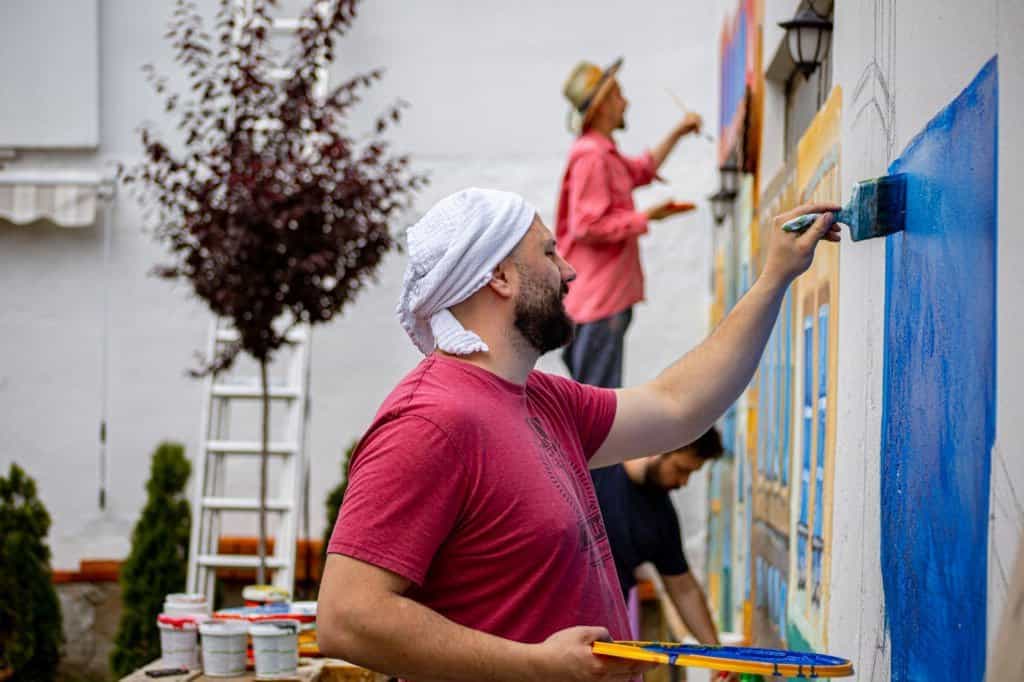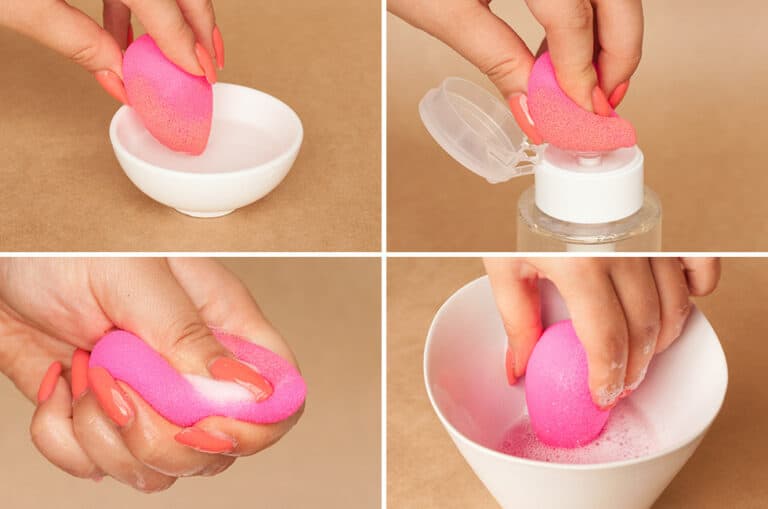10 Decorative Painting Techniques for Walls, Floors, Ceilings & Furniture

One form of art that has been around for centuries, yet is still popular today, is decorative painting. This type of painting is often used to enhance the appearance of walls, furniture, ceilings, and other household objects.
Decorative painting can be a great way to add some personality and style to your home, and it’s a fun activity that the whole family can enjoy.
There are many different techniques that can be used to create a decorative painting, including stenciling, sponging, and marbling. In addition to adding visual interest, decorative painting can also be used to conceal flaws or add insulation to a surface.
Why is Decorative Painting Still Popular?
Decorative painting techniques have been used for centuries to enhance the appearance of objects and walls. The art form has evolved over time, but the basic premise remains the same: to create a visually appealing design.
There are many different ways to achieve this goal, and decorative painting is still popular today because of its versatility and ability to personalize a space.
There are many reasons why decorative painting techniques are still popular today:
- One reason is that they can add a lot of personality and character to a space.
- Decorative painting can be applied in a variety of ways. Some people prefer to use a brush, while others may choose to use a sponge or a rag.
- Another reason is that they are a great way to hide flaws in a wall or surface.
- Additionally, decorative painting techniques can be used to create unique and interesting patterns or designs. There are many different patterns and designs that can be used, so it’s easy to create a unique look.
- They can be used to make a space feel more cozy or inviting.
- Decorative painting doesn’t require any special skills or training; anyone can do it with a little practice.
Decorative Painting Techniques for Walls, Floors, Ceilings & Furniture
There are countless techniques that can be used to create unique designs, from simple brushstrokes to more intricate patterns. By experimenting with different techniques and colors, you can create a look that is truly your own.
1. Sponging
Sponging is the most beginner-friendly method of all the decorative painting techniques. Even kids can copy this technique, though they might make a mess of it.
This techniques involves using a sponge to apply paint to a surface in a random or geometric pattern. This technique can be used on walls, furniture, and other surfaces.
Sponging is a great way to add texture and interest to a painting project. It can be used alone or in combination with other techniques. There are many different ways to use sponging, so it is a great way to experiment and see what looks you can create.
If you are new to sponging, start by experimenting with different colors and patterns. You can also try different types of sponges for different effects. Be sure to practice on a scrap piece of wood or paper before starting your project so that you get the hang of it.
2. Cerusing
Cerusing is a decorative painting technique that can be used to create an antique look on furniture or walls. It involves applying a white paint to the surface and then rubbing it off with a cloth to create a worn effect.
The technique can be used on its own or in combination with other decorative painting techniques such as glazing or rag rolling.
The best way to learn cerusing is by practicing on a piece of scrap wood or cardboard. Begin by painting the surface white and then using a cloth to rub off some of the paint.
You can experiment with different amounts of paint being removed until you achieve the desired effect. Once you are happy with your results, apply the paint to your furniture or walls.
3. Combing
Combing is one of many decorative painting techniques which can be used to create a variety of textures and patterns. To comb, use a brush with long, even strokes to move the paint around on the surface. You can also use a toothbrush or other small brush to add detail.
Combing is a great way to create interesting textures and patterns in your paintings. It’s easy to learn and can be used on all kinds of surfaces, including canvas, wood, metal, and glass. You can experiment with different colors and techniques to create unique effects on your wall, floor, ceiling, or furniture.
| TIP |
|---|
| The best way to learn how to comb is by practicing. Try combining different techniques and colors until you find something that you like. |
4. Glazing
Glazing places a transparent coat over the base coat of paint, making the wall look a bit shiny and transparent. You can use as many coats of glaze as you want to get the desired look.
Glazing involves applying a thin layer of paint over another color or finish. This can create subtle effects or bold contrasts.
Glazing adds a clear coat on top of the base coat of paint, which makes the wall look shiny and clear. You can apply as many coatings of glaze as necessary to achieve the desired appearance.
There are many different ways to glaze paint. Some techniques involve using a brush, while others involve using a sponge or cloth. You can also use a palette knife to apply the glaze.
Glazes can be used to create different textures and patterns. They can also be used to add depth and highlights to your painting. Experiment with different colors and finishes to see what looks best with your project.
5. Ombre
Decorative painting techniques can add a touch of elegance to any room in your home. One popular technique is ombre, which can be used to create a gradient effect with your paint colors.
There are several ways to achieve an ombre effect, but the most common method is to start with a light color and gradually add more and more of the darker color until you reach the desired intensity.
You can also use ombre to create depth and texture in your paintings by using multiple colors. Experiment with different color combinations to create unique effects.
6. Trompe-L’oeil
Trompe-L’oeil, which is French for “fool the eye,” is a type of decorative painting that uses realistic three-dimensional illusions to create the appearance of depth and realism.
This technique can be used to create a wide variety of effects, from simple details like vines or leaves painted on a wall to complex scenes that appear to be real life objects or landscapes.
One of the best things about trompe-l’oeil is that it can be used to make any space more interesting and unique. Whether you’re looking to add a little bit of personality to a room or want to make a boring space more visually appealing, trompe-l’oeil can be a great option.
7. Decoupage
One of the most popular and versatile decorative painting techniques is decoupage. This involves applying cut-outs of paper or fabric to a surface and then sealing them with a coat of varnish or lacquer.
The result can be quite stunning, as the different textures and colors of the materials used create an interesting and eye-catching effect.
There are lots of different ways to do decoupage, but one of the simplest is to cut out your shapes using ordinary scissors, then apply a layer of glue to the back of each one. Place them in the desired position on your project surface and press down firmly until the glue dries.
| TIP |
|---|
| Once everything is in place, give it all a good coat of varnish or lacquer to seal it in and protect it from moisture and dirt. |
8. Rag Rolling
Rag rolling is an easy and effective way to add texture and interest to your painted surfaces. The technique involves using a small piece of cloth, or “rag,” to apply paint in a random, rolling motion. This creates a soft, mottled effect that can be used on walls, furniture, and other decorative items.
There are a few things you’ll need to get started with rag rolling: a small piece of cloth (a rag or old T-shirt will work), some paint in the color of your choice, and a paintbrush. You’ll also need something to protect your surface from the paint, such as newspaper or a plastic drop cloth.
To begin, pour some paint into a small dish or bowl. Dampen your rag with water, then wring it out so that it’s just dampened but not dripping wet.
9. Color Wash
One of the simplest and most popular decorative painting techniques is color wash. This involves diluting paint with water and then applying it in a thin layer over a previously painted surface.
The effect can be softened and subtle, or more pronounced, depending on the colors used and how much water is added.
To achieve a color wash, begin by mixing your desired colors together in a small container. Be sure to use enough paint to create a solid color, but not so much that it will be difficult to apply thinly. Then add water until the mixture is thin enough to easily spread across the surface.
Apply the color wash in thin layers, allowing each one to dry before adding another. You can also experiment with different brush strokes to create different effects.
| INFO |
|---|
| A color wash is a great way to add softness and interest to any painted surface. |
10. Stenciling
Stenciling is a simple process that can be done by anyone, and it is a great way to add some personality to your home.
The first step is to find a stencil that you like. There are many different designs available, so you should be able to find one that fits your style. Once you have chosen a stencil, you need to decide on the colors that you want to use.
You can use any type of paint, but it is important to choose the right type of paint for the surface that you are working on. If you are using a stencil on canvas, for example, you will need to use acrylic paint.
Conclusion
In conclusion, decorative painting techniques are a great way to add some personality and flair to your home. Decorative painting techniques are still popular because they can add a lot of personality to a room. They can also be used to hide flaws or to fix common wall painting problem. Some popular techniques include stenciling, sponging, and rag rolling.
There are many different techniques to choose from, so find the one that best suits your style. Once you get started, you’ll be amazed at what a difference these simple changes can make.
The best way to learn decorative painting techniques is by practic






